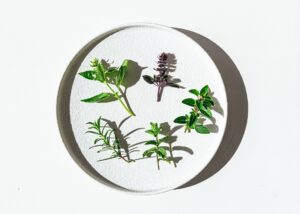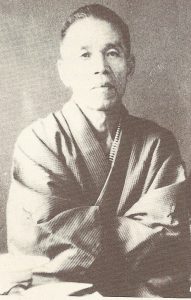According to mythology, Prometheus taught people how to use fire. Vulkanos is the god of fire. We know from history that the Roman vestals had to guard the sacred fire on the altar of the goddess Vesta, deity of the local hearth, and were not allowed to let it go out.
Fire made it possible for man to work metal and to manufacture metal tools, which in turn encouraged the development of agriculture and thus the settling down. With the fire he also discovered the advantages of cooked food, which he eagerly used from then on, which, incidentally, was very conducive to the development of his intelligence. Civilized man eats most of his food in cooked form.
Contact with fire (heat) makes our food stronger yang, and certain yin factors are eliminated. Everyone can use it to design the way of cooking so that the various foods exactly meet their personal Yin / Yang requirements.
We know from history that grain was the basis of nutrition in all countries of the world and that the various types of grain were eaten cooked together with legumes that were also cooked. Man very quickly realized that cooking, in general, facilitates the digestion and assimilation of food. Which is not to say that all food must be cooked under all circumstances; Sometimes it is enough to only briefly boil food, for example when blanching vegetables.
The effect of the cooking process on the various nutrients determines how long it is cooked and whether or not it is cooked.
Effects of cooking on protein compounds
If proteins are heated, coagulation begins at a temperature of 58 to 65 ° C; at 70 to 85 ° C. hydrolysis then begins. This is catalyzed by the effect of heat on the water contained in all foods (especially the connective tissue); the higher the temperature, the greater the precipitation of protein.
On the other hand, the digestibility of the proteins, which is reduced by the coagulation, is restored by the hydrolysis. Well-chewed protein compounds can be more easily attacked by gastric juices; the finely ground mass is then broken down by trypsin and other proteases down to amino acids, which in turn are absorbed by the intestine and are used to produce the proteins of the species that make up our body.
Rapid cooking under pressure, ie a maximum of 20 to 30 minutes at 120 ° C, has little effect on the proteins. If the time is extended to one hour at the same temperature, the lysine and histidine are destroyed. If you cook meat and fish, both of which contain a lot of lysine, at too high temperatures, the amino acids they contain are no longer in balance. For this reason, sterilized bottled milk should be replaced by hyperized one; this is heated to 142 ° C, but only for fractions of a second.
At temperatures above 120 ° C, meat starts to brown, especially because the few carbohydrates it contains react with amino groups; if the temperature continues to rise, benzpyrene can form, a substance that is mainly produced when grilling, which is why you should refrain from this type of preparation. Cooking with a pressure cooker is often recommended for cereals. However, after the first increase in temperature, ie pressure, the supply of heat must be reduced so that cooking continues for an hour or more at a maximum of 105 ° C. The proteins are preserved under these conditions.
Effects of Cooking on the Enzymes
Enzymes control all processes of life and also death of the cells of our body and the various nutrients. If, for example, an animal is slaughtered, it immediately forms cadaverine, a proteolytic enzyme that begins to decompose the meat so that it can ultimately return to earth according to the laws of the universe. To stop this degradation process, you have to cool or freeze or cook immediately, because hydrolysis releases aqueous solutions in which the bacteria develop very quickly.
In the case of vegetables, for example, the effect of oxidases already sets in with the harvest, which can be seen from the withering. It is mainly vitamin C that is attacked, and to save most of it, one can blanch at 70 ° C or, above all, dip green vegetables for a brief moment in almost boiling water; the degradation effect of the oxidases is stopped. The same goes for all other heat sensitive vitamins.
In the case of types of fruit that can be stored when ripe, the action of the enzymes is slowed down; therefore it is possible, for example, to overwinter apples in a cool cellar. However, if you wanted to keep them fresh for a long time, you would have to stop the “slow breathing” by injecting anti-enzymes or store them in rooms with a motionless atmosphere. Nitrogen is best for such an atmosphere, but other types of gas are used; They are not always safe from a dietetic point of view, but they are legally permitted. Overall, this method is not recommended.
With grain these problems do not arise at all; it is in an absolute “hibernation” for the period of storage. After all, the water content is below 16%, and the enzymes contained in the seedling are separated from the endosperm by the label, which here functions as a protective shield. The label only dissolves when exposed to moisture at the appropriate temperature. Nothing is as suitable as grain to serve as a supply of basic food for humans, since it can be stored indefinitely.
Soybeans and egg white, for example, contain substances in their raw state that hinder the effectiveness of trypsin; The digestibility of their proteins is only guaranteed when cooked, when these substances have been eliminated by the cooking process (for soybeans for 30 minutes).
Effects of Cooking on Carbohydrates
The world supply of carbohydrates is essentially represented by the starch contained in grain. You shouldn’t eat grains raw. Another myth is that muesli is healthy. In industrial production, the oats are peeled, steamed and kilned and then briefly treated with moist heat. The kiln is a heat treatment (90 minutes at approx. 100 degrees Celsius) that inactivates fat-splitting enzymes. Then the oats are pressed.
Although these two treatment steps often emphasize that valuable ingredients are retained, losses must always be expected when treated with heat and press. The heat treatment is needed to make the oatmeal durable.
So grain is boiled twice its volume of water or three to four times as much if one wants to make grain “milk” for babies or small children; in certain cases, up to ten times the volume can be used as cooking water.
The grain sucks itself full of water, which allows the starch to expand, between 48 and 62 ° C it reaches its maximum; the exact maximum value depends on the type of starch and its respective gelatinization temperature. This means the temperature at which the starch is hydrolyzed to dextrins, ie the starch molecule is broken down into shorter molecules (molecular weight 10,000). These dextrins can be easily broken down by the amylase in the saliva if enough is chewed. If, for example, you want to eat raw, crushed grain at breakfast according to Boudwig, each bite has to be chewed at least 200 times until the ptyalin can develop its effect. I see this type of breakfast as a detox for people who have long consumed large amounts of animal protein and animal fats rather than real food.
The browning of carbohydrates when exposed to heat means that they have caramelized, that is, converted. The lactose in the sterilized bottled milk is browned, hence the characteristic color. In vegetables, the carbohydrates are surrounded by a protective cellulose shell; Insufficiently chewed vegetables are therefore indigestible and can cause digestive problems. During the cooking process, this cellulose shell expands, then bursts and is hydrolyzed, i.e. partially broken down. The hemicelluloses contained in vegetables are also broken down and are then easier to chew and digest. The remaining cellulose fibers act as dietary fiber for better intestinal passage and assimilation; mechanically, they have a gentler effect on the intestinal villi than when the vegetables are eaten raw. Legumes are first soaked and then cooked; the cooking process is accelerated by adding kombu algae; Well-chewed legumes are just as easy to digest as cereals. Cooking (ripe) fruit makes it easier to break down carbohydrates, which are easier to digest because they do not contain starch; Above all, however, the pectins are hydrolyzed and volatile acids are eliminated, resulting in a pleasantly creamy consistency and rounding off the taste.







